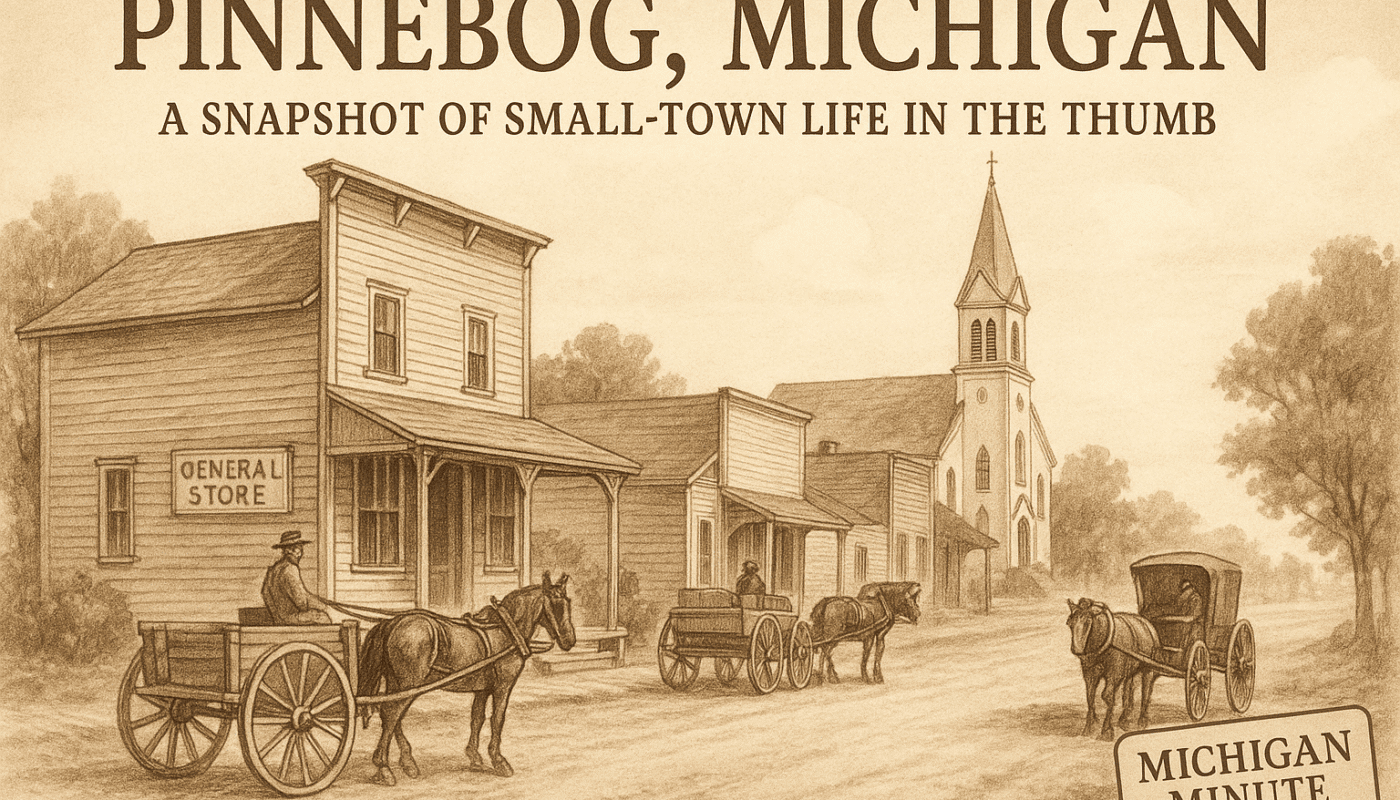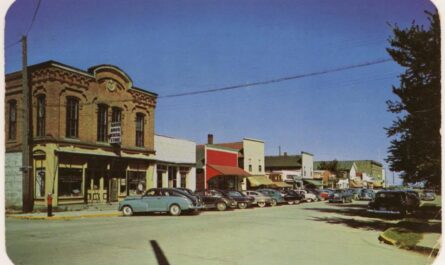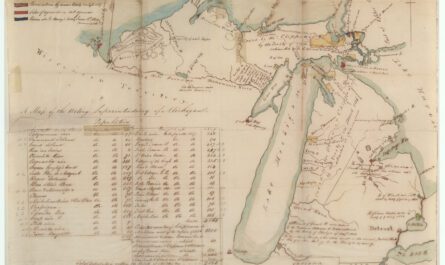Pinnebog, Michigan, nestled in Huron County’s Thumb region, might seem like a quiet dot on the map today. But over a century ago, this village pulsed with the steady rhythm of rural life. A look back through vintage photographs and historical maps shows a community built on faith, hard work, and neighborly ties.
One of the standout landmarks was the Methodist Episcopal Church, a wooden structure with pointed arch windows and a tall, weathered steeple. Churches like this were more than places of worship; they served as gathering spots for town meetings, socials, and milestones like weddings and funerals.
Education was also a priority in Pinnebog. The local schoolhouse, seen in a rare photograph, served generations of children from the surrounding farms. Its simple design matched the practicality of the era, with a bell tower calling students in each morning.
Busy Pinnebog Michigan Main Street
Pinnebog’s Main Street was the village’s commercial lifeline. Photos show dirt roads lined with hitching posts and bustling with horse-drawn wagons. At the heart of it all was Richard Waggoner’s General Merchant store—a large, two-story building offering essentials from dry goods to hardware. Historical records and maps from 1894 place Waggoner and his family at the center of much of the village’s business dealings, including a creamery and a wagon shop.
A closer look at the 1894 plat of Pinnebog Michigan reveals a well-organized settlement: homes, a grist mill by the river, and various small enterprises that kept the town self-reliant. Each business played a critical role, from providing food and supplies to ensuring transportation needs were met with local craftsmanship.
The village began to evolve in the early 20th century. Automobiles started appearing alongside buggies, and stores like Champagne’s grocery hinted at modern shifts in both architecture and commerce. Yet, even as times changed, Pinnebog’s sense of community endured.
These photographs are more than nostalgic keepsakes. They offer valuable insight into the life of a Michigan Thumb town—humble in scale but essential to the agricultural backbone of the region. Pinnebog’s story reflects the broader narrative of rural America: small towns that built Michigan’s economy and shaped its identity through everyday grit and determination.
Discover more from Thumbwind
Subscribe to get the latest posts sent to your email.




